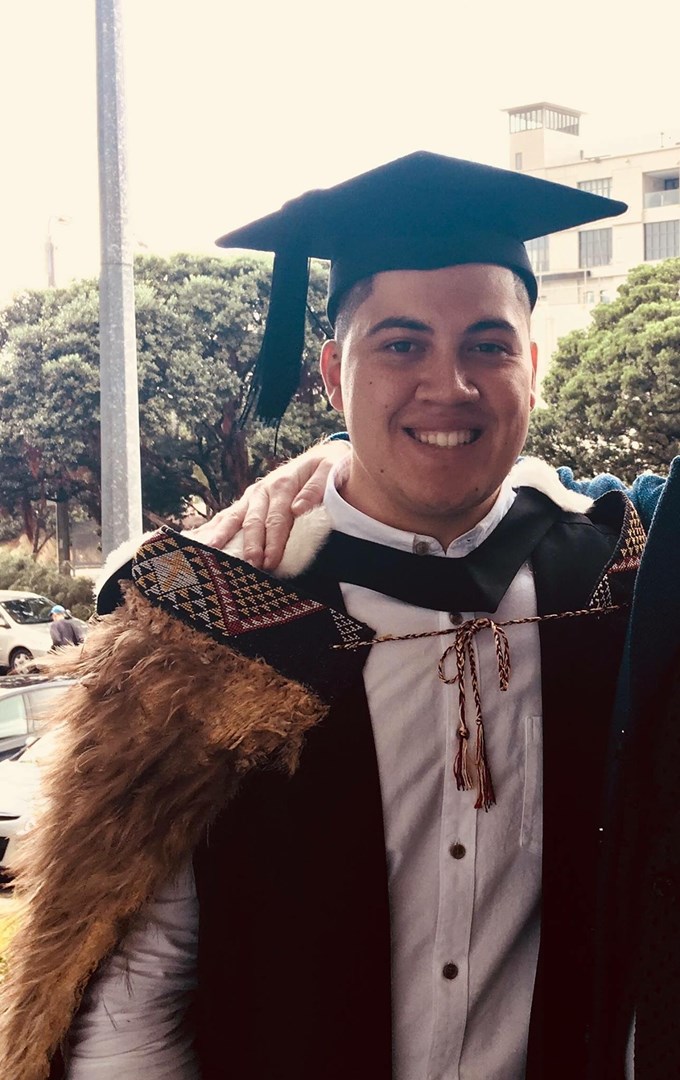Meet Kahurangi Eruera (Ngāpuhi, Te Whānau-ā-Apanui, Rangitāne, Ngāti Kahungunu ki Wairarapa).
Kahu is the new He Maunga, He Tangata intern (Māori Design Internship), a collaborative programme encouraging more young Māori architecture graduates into the industry to build experience and capability.
Kahu is fortunate enough to have grown up learning tikanga, te reo and whakaaro Māori from his pakeke (elders) as well as learning in a Kura Kaupapa Māori environment from a young age; instilling values and skills he hopes will help guide him toward a vision to influence meaningful change for his people and for Tāmaki whānui.
Auckland Council’s Māori Design Leader Phil Wihongi explains that He Maunga, He Tangata is a unique initiative available to Māori post-graduate architecture and landscape architecture students.
“The name He Maunga, He Tangata speaks to the immutable connections established by whakapapa, connecting Māori to their environment and tūpuna across time. With these connections and ancestral landscapes standing strongly, Māori can stand and flourish to become all that they can be,” he says.
Offered jointly by Isthmus Group, Te Whare Wānanga o Wairaka: Unitec Institute of Technology, and Te Kaunihera o Tāmaki Makaurau: Auckland Council:, the 24 month internship provides the opportunity to undertake post-graduate built environment design study, to be placed within a unique busy local government design environment, and also to be part of the design team in one of Aotearoa’s leading design studios.

Kahu completed his undergraduate degree in architecture at Victoria University of Wellington in 2018 and sees the next two years as an opportunity to grow in different areas of the industry while completing his Master of Architecture (Prof.) at Te Whare Wānanga o Wairaka/Unitec.
Kahu says he is reassured to see the visibility of young Māori within the design world growing and is excited at the opportunity to help contribute to this. “In the early days of this internship, I’ve become more aware of the progress being made,” he says.
Kahu acknowledges those who have gone before and have worked relentlessly to build a foundation that allows future generations to actively shape and pursue opportunities within both professional and educational environments, including within the Māori design space.
Kahu expects the experience will enable him to learn about the design process from multiple perspectives, establish relationships with Mana Whenua and within the industry, allow him to build leadership skills and pursue opportunities that explore the impact Te Ao Māori can have through the design of our urban spaces and our built environment.
Councillor Chris Darby says the internship is a good example of forward-looking thought and practice leadership arising through collaboration.
“Our aim is to create partnerships with Māori communities and agencies, developers and educators, bringing a new depth to Māori design thinking as we shape the built environments of Tāmaki Makaurau,” Darby says.
Read about Ahlia-Mei Ta’ala who stepped into the inaugural internship in 2019 and is on track to complete her Masters thesis this year before taking her knowledge, experience and new industry network into a career in landscape architecture. Mei’s goal is to, one day, take her skills back home to serve Whānganui iwi.
This article appeared originally on landscapearchitecture.nz and is republished with permission.
Celebrating best-practice Māori design in Tāmaki Makaurau
The 2020 refresh of Auckland Council’s Māori Design Hub introduced new Māori design case studies based on projects within the Downtown Programme: Te Wānanga (the new downtown public space) and Quay Street Enhancements.
Phil Wihongi explains: “Located at the meeting point of the city centre and Te Waitematā, these important public realm projects have introduced new approaches to collaborative design between Mana Whenua groups, leading Tāmaki Makaurau design practices and Te Kaunihera whānau.”
Councillor Chris Darby is encouraged by the emphasis given to Māori design in our city centre projects.
"A thriving Māori identity is Auckland’s point of difference in the world. It’s crucial we work with Mana Whenua kanohi ki te kanohi to reflect our unique identity in our design processes and finished projects,” says Darby.


